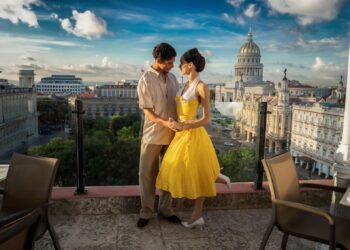Demographics don’t usually generate high-impact news. However, in July 2024, when officials of the National Office of Statistics and Information (ONEI) announced that between 2020 and 2023 the resident population in Cuba had decreased by 10% — meaning that fewer than 10 million people lived on the island — it was a real blow. That news filled headlines in Cuban and foreign media.
Last February, the topic returned to the news. The ONEI specified that there are just over 9.7 million people “effectively” living in the country: around 300,000 fewer than in 2023.
The prediction is that the trend will intensify.
The causes are obvious: rampant migration, a low birth rate, and more deaths than births.
An independent study provided more shocking data: between 2022 and 2023, the island’s population fell by 18%. According to this source, the true toll of the migration crisis would have left us with a population of 8.5 million.
Few modern societies, in times of peace, must have experienced declines of that magnitude at such an accelerated pace, while communities of their nationals are growing in other countries.
The trend toward population decline is accompanied by an aging process that has been observed for years. In the age structure of the Cuban population, people over 60 years of age account for 25%. In other words, at least 1 in 4 Cubans is over 60 years old.
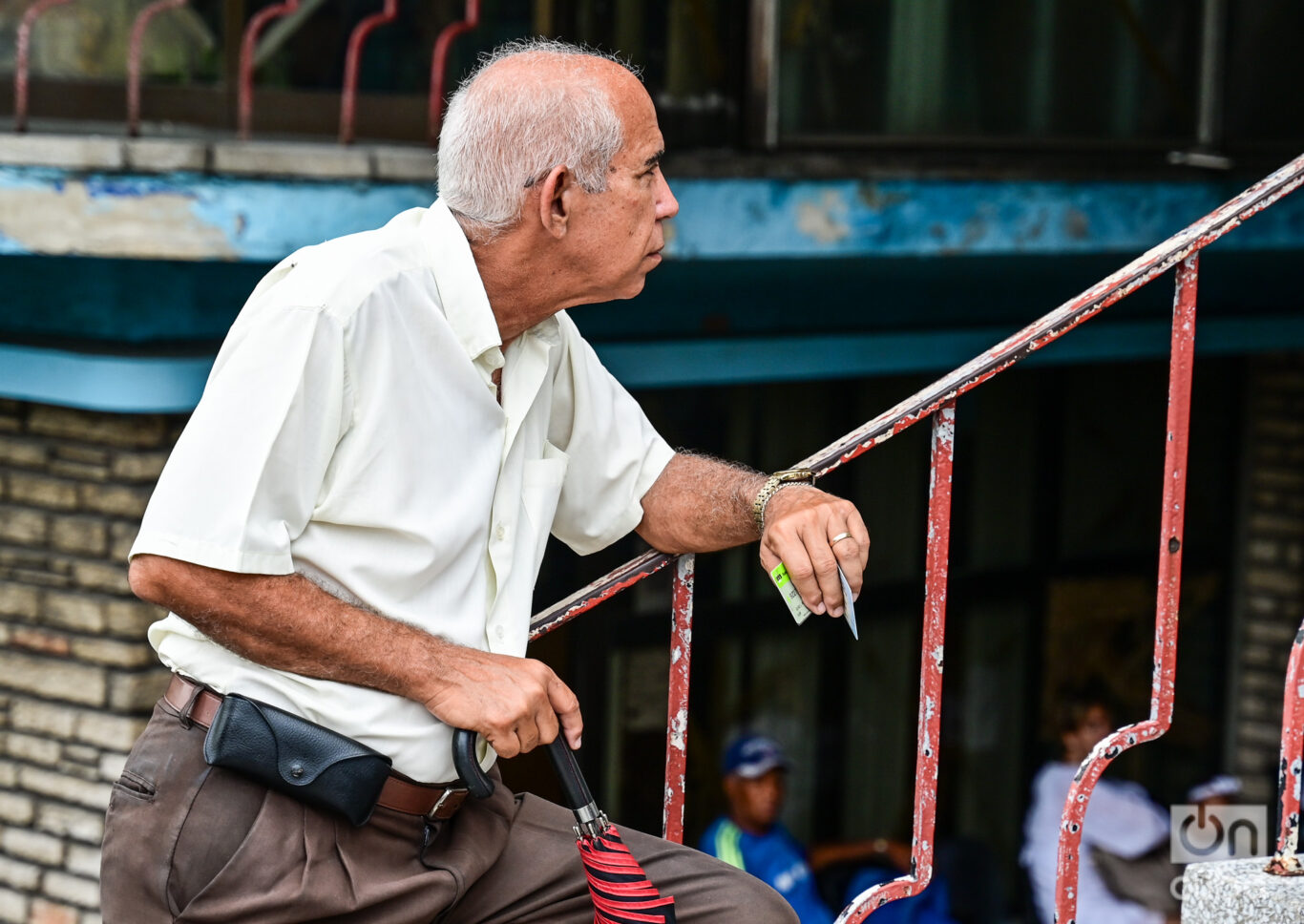
Demographic aging is a positive development. This means that sustained and lasting improvements in meeting essential needs and access to social services and benefits for the vast majority, especially health, basic nutrition, education, and social protection, tend to increase life expectancy and strengthen the population’s capacity for survival.
But the national context has become increasingly less friendly to the elderly. After the extreme vulnerability generated by the pandemic for the elderly, we have emerged to the surface of a crisis in which the final stages of life are subject to imminent dangers and limitations.
Investigating psychological care consultations and research on the elderly, five factors emerge that determine a good or bad old age in Cuba: level of income, physical and mental health, place of residence, care provided by family or others, and social interaction.
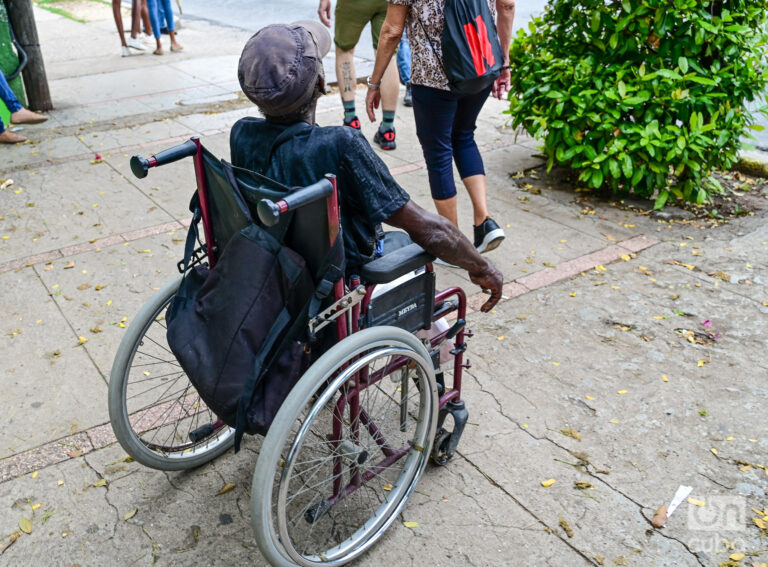
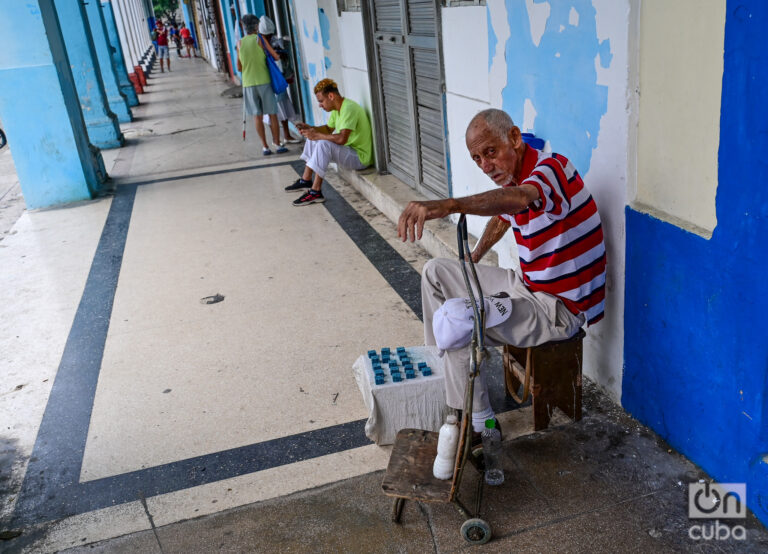
Based on these variables, and the stage of old age, models of aging are shaped, as well as the real enjoyment — or lack thereof — of the rights recognized by the Family Code, such as respect for self-determination, preferences, and equal opportunities in family life for older adults. However, although endorsed by law, these models are not realized by decree.
A look at the context from this perspective reveals a worrying picture:
In December 2024, authorities reported that only 24% of the basic prescription drug list was available. Those distributed in a controlled manner for the treatment of diabetes and hypertension are below demand. In 2022, a shortage of 12,065 physicians was confirmed, compared to the previous year.
Currently, the minimum pension is 1,528 Cuban pesos (CUP) and the average is 2,000 Cuban pesos (CUP), while the cost of the basic food basket, according to independent estimates not officially recognized, reaches a monthly per capita average of 12,000 Cuban pesos (CUP). Around 40% of retirees are within the minimum pension range. In 2022, it was also estimated that 17.4% of older adults live alone.
Incidentally, a demographer colleague shared his estimates with me:
It is likely that the percentage of older adults living alone has increased to 20%, due to the preferential emigration of the 15-19 age group and the increase in the number of senior citizens. If the proportion of low-income older adults (40%) is applied to this group, it would mean that more than 164,000 elderly people would be affected by this dual condition.
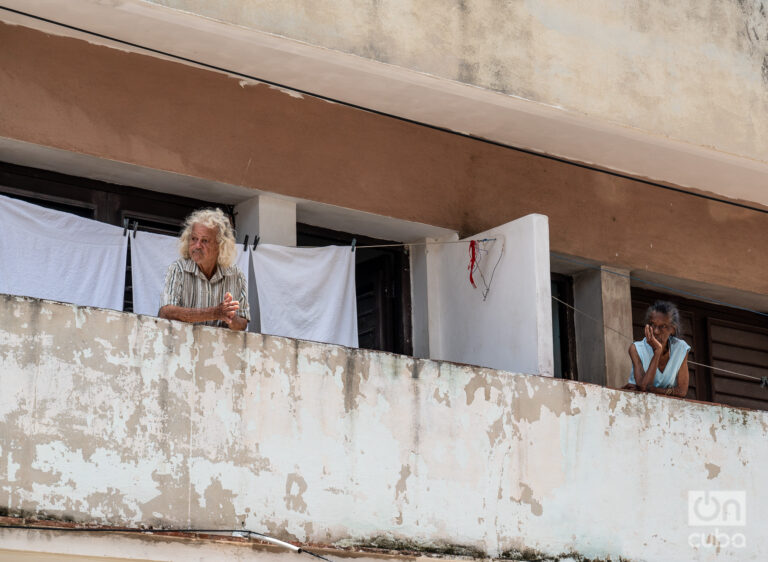
Senior citizens’ circuits
In the country’s cities and towns, it’s possible to identify a kind of “daily longevity circuit,” where elderly people who no longer work frequently pass by and gather: the bank, the grocery store, the bakery, the pharmacy, the doctor’s office, and the park.
People of faith, or those driven by necessity, add another space: they attend churches and religious activities, where they find spiritual solace, socialization, and support for their needs and loneliness.
At the first five points of the circuit, they typically spend a long time waiting in line until it’s “their turn” to collect their pension, buy something, or see to their health. In the park, the outlook is more encouraging: they attend tai chi exercises or other free or paid exercises — depending on the arrangement — led by trained instructors in the neighborhoods with the support of the National Sports and Recreation Institute (INDER).
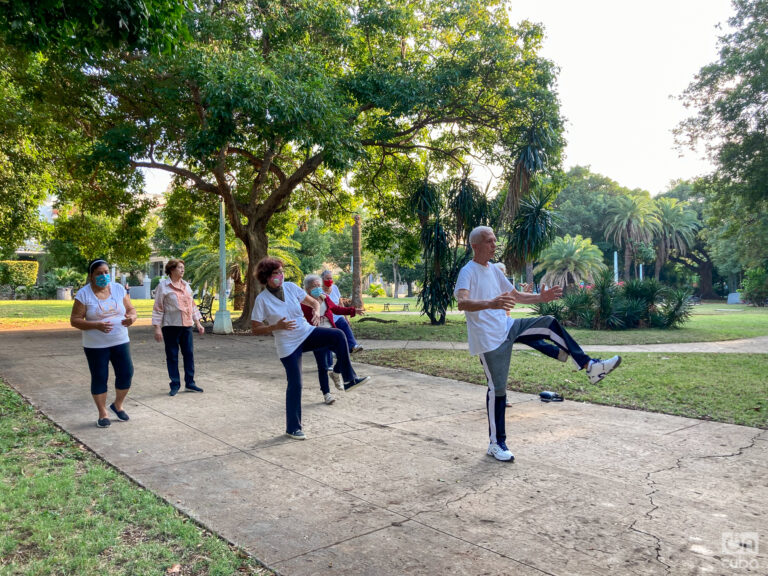
Listening to the conversations on this route reveals a story about the ideal model, the wished-for life:
Adequate income allows you to buy what you need in the formal and informal markets, including medicines, and also pay for care, taxis, and various services. You can decide how to spend your money, eat what you want. Treat yourself. Give your grandchildren something. Have the bare minimum for a good life: a bed, mattress, fan, television, a rocking chair, and a leak-free roof. Morning coffee and milk are a must. If you have children living abroad, a cell phone to communicate.
Being able to fend for yourself gives you independence; you can plan how to spend your day, even if you don’t have much financial coverage. It’s possible to continue working and feel useful. It’s also possible to help around the house, in the kitchen, with shopping, with the children.
Living in a centrally located place makes it possible to travel, without much effort or cost, to services, cultural and social activities, meetings with friends, seeing people, and talking.

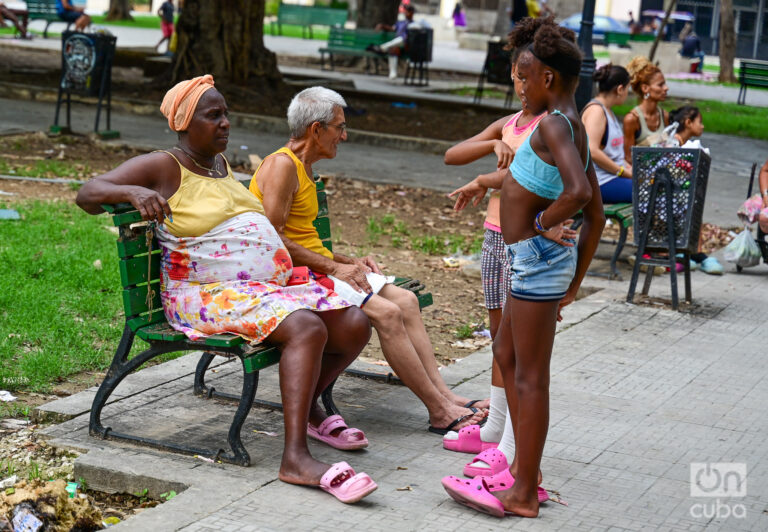
Being accompanied, whether permanently or frequently, mitigates possible physical and mental decline, supporting daily activities or a walk together. Whoever accompanies must do so with love and understanding, without trying to make decisions for someone who is mentally fit. Friends are very important. If the children are not there, but they send money, medicine, and food, and they call, their absence is less felt; it gives them a sense of protection and love, and one lives with the hope of reunions. They take care of their health to see them again. They take care of their minds so as not to forget them.
This is the land of lonely old people. We are getting fewer and older all the time.
We are an endangered species; it must be because of climate change.
Will the rice come in this month at the grocery store? It’s running out at home.
I’m out of enalapril, and I still don’t have the new card for lisinopril. How long will this abuse continue?
Stop by my house for coffee later.
I already have “the package,” I can copy La Voz Kids and MasterChef for you. Dude, remember dominoes this afternoon.
All of this can be heard from them.
In the park, on a WhatsApp video call in full public view, a woman expresses her gratitude that she got the money on her MLC card, and the package of chicken, and the La Llave coffee have arrived. She takes advantage of the opportunity to inform them that she has already completed the procedures to legalize the titles and other documents the family needs abroad. A neighbor, also an elderly woman, takes a peek at cell phone camera and greets the woman’s daughter on the other end of the call.
Everyone talks about the situation in the country and “how bad things are,” with shared opinions, conflicting opinions, and occasional heated arguments, depending on whether the responsibility for “the situation” is attributed to the blockade or the government.
Other activities fill the time. Watching Netflix series and Turkish soap operas, participating in diverse community projects (more so for women), listening to sports events on the radio, watching soccer and baseball games on TV, and keeping up-to-date on politics (more so for men), and chatting with friends and neighbors.
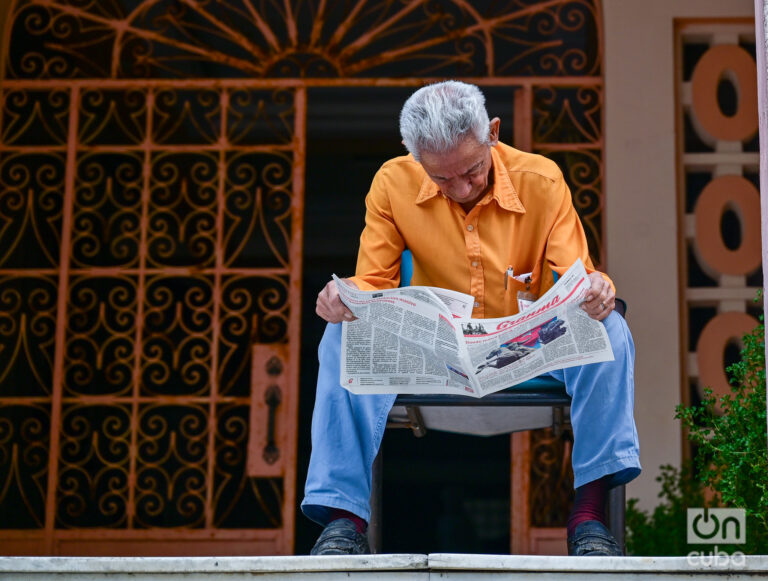
A preferred route is culture. According to observations in different cities across the country, older adults are overrepresented in classical music concerts, musical gatherings, theaters, plastic arts exhibitions, book presentations, lectures, and activities in historic centers.
But this noble circuit, with its free and low prices, is selective and exclusive. For seniors to participate in it, they need proximity or availability of transportation, information, and companionship.
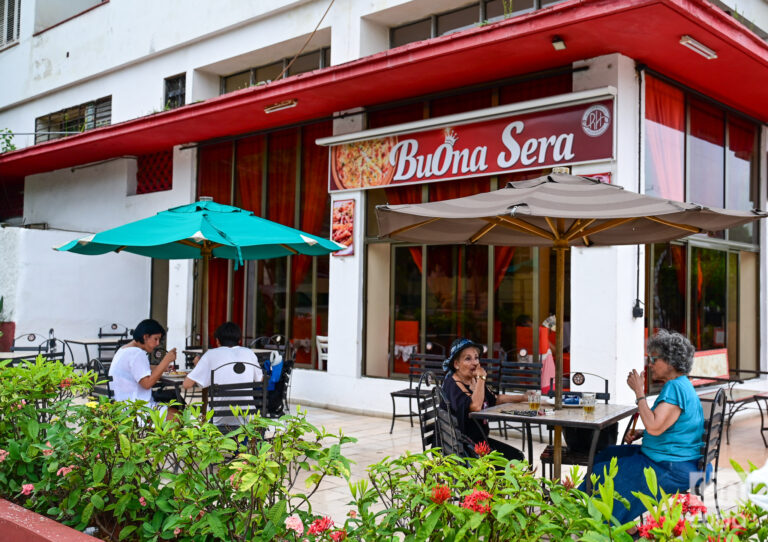
The very painful underworld of garbage scavenging, begging, and street life also swallows up the elderly. Without official data, street counts in Centro Habana, Old Havana, and El Cerro show that at least half of the people in this situation are older adults, and the majority are of African descent.
The combination of shortages, emigration, and aging has led to the emergence of diverse transnationalized circuits as a zone of economic activity, in the private and informal sectors, aimed at the elderly.
Enterprises or self-employed workers offer nursing services, personalized geriatric medical care, housework, companionship, money transfers, transportation, and parcel delivery.
These services are available to anyone who can pay, here or there, in any currency, but they have refined and expanded their offerings to respond to a growing demand from those “over there” for their elders “here.” Money makes a difference in old age in today’s Cuba.
A network of solidarity, based on friendship and kinship, fulfills similar functions for the parents and grandparents of those who have moved their “effective” residence across the national border: they bring and take things on round trips, carry out banking transactions, obtain medicines, take equipment for repairs, and help older adults learn to use computers and phones.
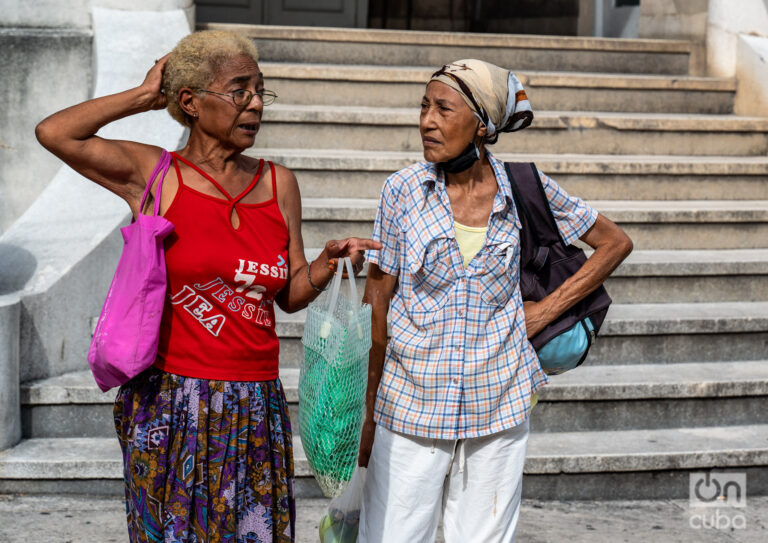
Emergencies
The low incomes of a large segment of the elderly, the increase in families living in poverty, the limited capacity of the economy to overcome the crisis, the weakening of social institutions and benefits, and emigration weigh especially heavily on this stage of life and mark it with high levels of uncertainty and discomfort.
Obviously, personal, family, and socioeconomic conditions intertwine here, which, in combination, make life in old age very diverse. It is an area where the hairy ear of social inequality and equity gaps emerge at every turn.

The shortages and vulnerabilities associated with this stage of life are not invisible to social policy. A broad set of benefits is designed to address them, most of which are coordinated by the Ministry of Labor and Social Security, the Ministry of Domestic Trade, and the Ministry of Public Health.
This package includes monetary benefits for low-income individuals and families, home social services for single people and those with low incomes, payment of electricity bills, exemption from medication payments, lifetime or temporary medical diets, the Family Care System (SAF), which offers low-cost prepared foods, nursing homes, and senior citizen homes. The University for Older Adults, where it is present and accessible, offers an opportunity to socialize, learn, and dignify self-care.
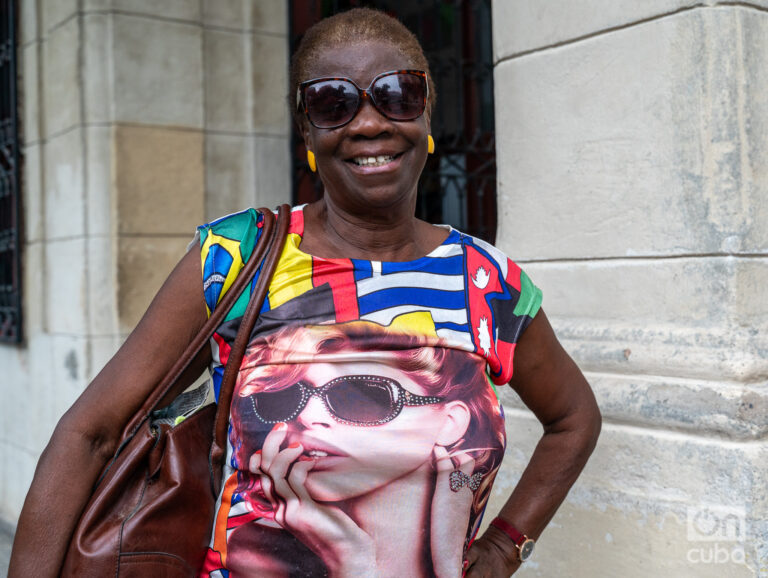
For 2025, the national budget also planned to allocate 2.456 billion pesos to care services for children up to six years old and the elderly or disabled, fertility care, and the production of technical aids such as canes, crutches, walkers, and wheelchairs.
These supports provide relief to those who receive them, but their supply, in quantity and quality, falls short of actual demand, and their meager amounts, which do not adjust to the cost of living, do not provide the necessary coverage or exceed minimum protections; they often fall short of basic needs.
Between 2012 and 2021, life expectancy at birth fell from 78.53 to 71.25. More than one million people in the country are over 70 years old. An entire generation of our fellow citizens will be left out of the supposed improvements envisioned in the 2030 Development Plan, even if these improvements are achieved.
Cuban society today faces many urgent needs and shortcomings, but the elderly, a quarter of the population, are undoubtedly one of the red flags.










